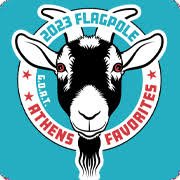What is Rolfing?
/by Leah McKellop
Rolfing® Structural Integration is a new addition to the Thrive Practice and for many people it is any unfamiliar modality. So, what is Rolfing?
Rolfing originally developed out of the manual manipulation practices of Osteopathy in the first half of the 20th century. Dr. Ida Rolf, for whom the system is named, took techniques of soft tissue manipulation and applied them to a concept of organizing our bodies to work more efficiently in gravity. Today, the underlying goals of Rolfing are still to improve posture and help people to move with more ease. What has developed out of this concept is a system that reduces wear and tear on our bodies which improves pain, energy levels and physical performance. If your body isn’t wearing itself out trying to hold you up in gravity, it frees up a lot of energy to maintain health in other areas.
Rolfing primarily works with connective tissue known as fascia. This is the flexible matrix giving our cells, muscles, and organs their shape. It exists throughout our bodies, connecting muscle to bone, organ to muscle and allowing each structure to move freely of others around them. A nice way to think about fascia is to look at an orange. That white material that separates the fruit from its peel, divides out sections and keeps juice cells separate is very similar to the system of fascia in our own bodies.
Many of the structures in our body, like muscles, are wrapped in an outer casing of fascia that should allow the muscle to slide against neighboring muscles. This way one muscle can contract at a time, creating fluid unhindered movement. When you are asleep and night and still for hours, that fascia begins to adhere to the neighboring muscles’ bags. Ideally you will stretch in the morning and all of those adhesions will break free. But if you sit at all day, or have an injury that keeps your shoulder from moving, or always walk or stand in the same way, some of those adhesions will not have the chance to break free. Your posture and movement is not just a conscious choice. Sometimes you are quite literally stuck into a pattern due to adhesions in your fascia.
This is where Rolfing becomes a useful tool. Rolfing sessions usually consist of long slow strokes that free up adhesions between or within structures (muscles, bones, organs, nerves). Without adhesions, the recipient’s body is free to take on healthier posture. Because posture is also affected by our brains, Rolfing sessions will often also involve movement repatterning, in which the receiver learns to move in ways that continue to improve posture and comfort.
Fun Fact: Often, recipients’ posture will continue to improve months after receiving a 10 series, the traditional regimen that works on whole-body posture. Once your posture and movement patterns have improved, each time you move you will continue to free up adhesions in your body. check out these photos of a client right after their last session of the 10-series and then again six months later.















